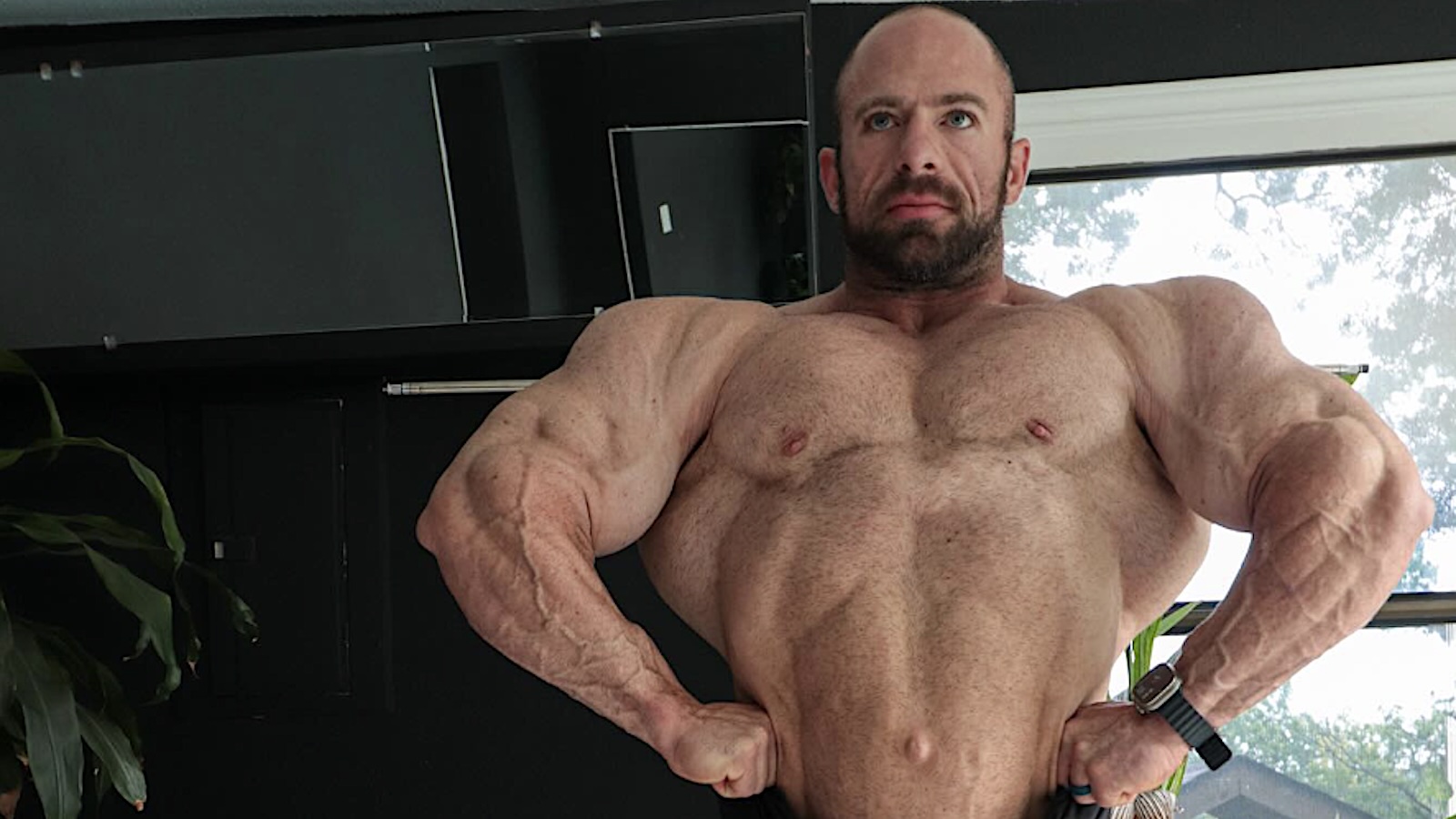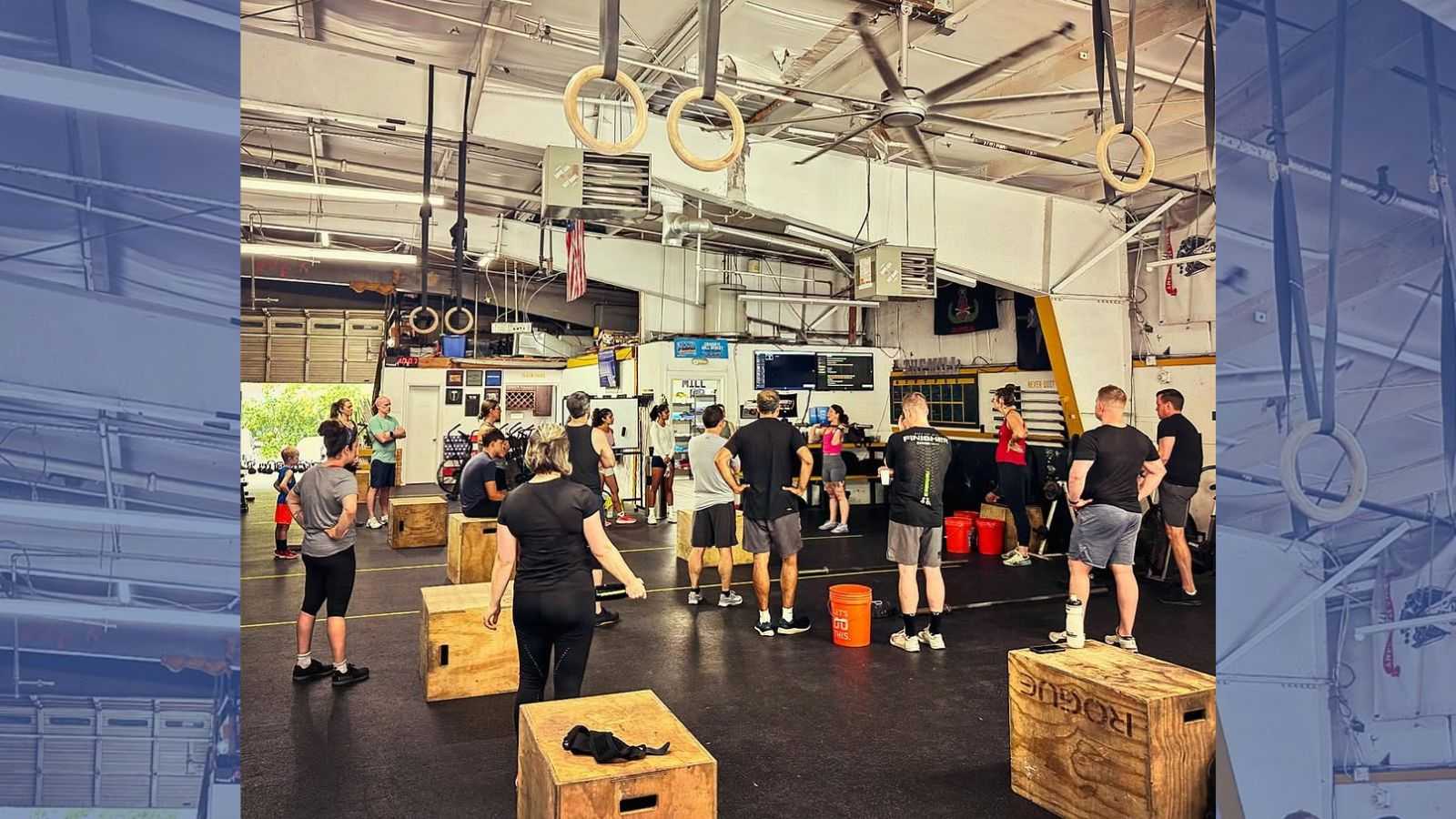Jewett reaches across his body for a deeper stretch.
Men’s Open bodybuilder John Jewett is preparing for the 2025 Texas Pro. In his training, he utilizes cable lateral raise to cap his medial delts to create aesthetic width to his silhouette, balance his physique, and offer symmetry atop his V-taper. Cable lateral raises are a technically challenging exercise; from setup to grip hacks and form cues.
In late July 2025, Jewett broke down how to master this go‑to shoulder exercise and supersize delt development.
Stability Cues
Before his first repetition, a proper setup laid the groundwork for achieving muscle growth safely. Jewett recommended setting the cables to hand height, which positions the arms at roughly 90 degrees in relation to the torso — an alignment to maintain tension on the delts from the start of the lift.
Take a slight step out and use your non-working hand to stabilize the cable machine. Lateral raises—dumbbell or cable without stabilization—can lead to excessive upper trap engagement, defeating the purpose of the movement. (1)
Once foot position and stability are dialed in, allow the working arm to cross the body. Switch the D-handle for a wrist cuff to prevent forearm and wrist strain. Alternatively, wedge the V-bar through your hands to offload wrist pressure.
Scapular Alignment & Execution
Jewett’s two cues to make cable lateral raises more joint-friendly are reaching across the body to stretch the medial delt and move the hand in an arc.
Scrape the ground. Then, come up to scrape the walls reaching towards the ceiling.
—John Jewett
Jewett tilted his torso forward and positioned the cable slightly behind the hip to alleviate discomfort. Doing so can reduce strain by aligning the shoulders with the scapular plane rather than the frontal plane. A 2024 study showed that many individuals experience shoulder pain during lateral raises. (2)(3)
Cable lateral raises help Jewett maintain his boulder shoulders in the off-season. He doesn’t throw out dumbbell lateral raises, though, since both can grow the delts effectively. (4)
“Cable laterals are great. Use this setup to ensure high tension out of your bottom position, reach across the body thorugh full range of motion,” Jewett concluded.
More Bodybuilding Content
References
- Coratella G, Tornatore G, Longo S, Esposito F, Cè E. An Electromyographic Analysis of Lateral Raise Variations and Frontal Raise in Competitive Bodybuilders. Int J Environ Res Public Health. 2020 Aug 19;17(17):6015. doi: 10.3390/ijerph17176015. PMID: 32824894; PMCID: PMC7503819. https://pubmed.ncbi.nlm.nih.gov/32824894/
- Larsen, S., Wolf, M., Schoenfeld, B. J., Sandberg, N. Ø., Fredriksen, A. B., Kristiansen, B. S., van den Tillaar, R., Swinton, P. A., & Falch, H. N. (2024). Dumbbell versus cable lateral raises for lateral deltoid hypertrophy: an experimental study. SportRχiv. doi: 10.51224/srxiv.487. https://www.researchgate.net/publication/387157135_Dumbbell_versus_cable_lateral_raises_for_lateral_deltoid_hypertrophy_an_experimental_study
- Kolber MJ, Cheatham SW, Salamh PA, Hanney WJ. Characteristics of shoulder impingement in the recreational weight-training population. J Strength Cond Res. 2014 Apr;28(4):1081-9. doi: 10.1519/JSC.0000000000000250. PMID: 24077379. https://pubmed.ncbi.nlm.nih.gov/24077379/
- Campos YAC, Vianna JM, Guimarães MP, Oliveira JLD, Hernández-Mosqueira C, da Silva SF, Marchetti PH. Different Shoulder Exercises Affect the Activation of Deltoid Portions in Resistance-Trained Individuals. J Hum Kinet. 2020 Oct 31;75:5-14. doi: 10.2478/hukin-2020-0033. PMID: 33312291; PMCID: PMC7706677. https://pubmed.ncbi.nlm.nih.gov/33312291/
Featured image: @johnjewett3 on Instagram










